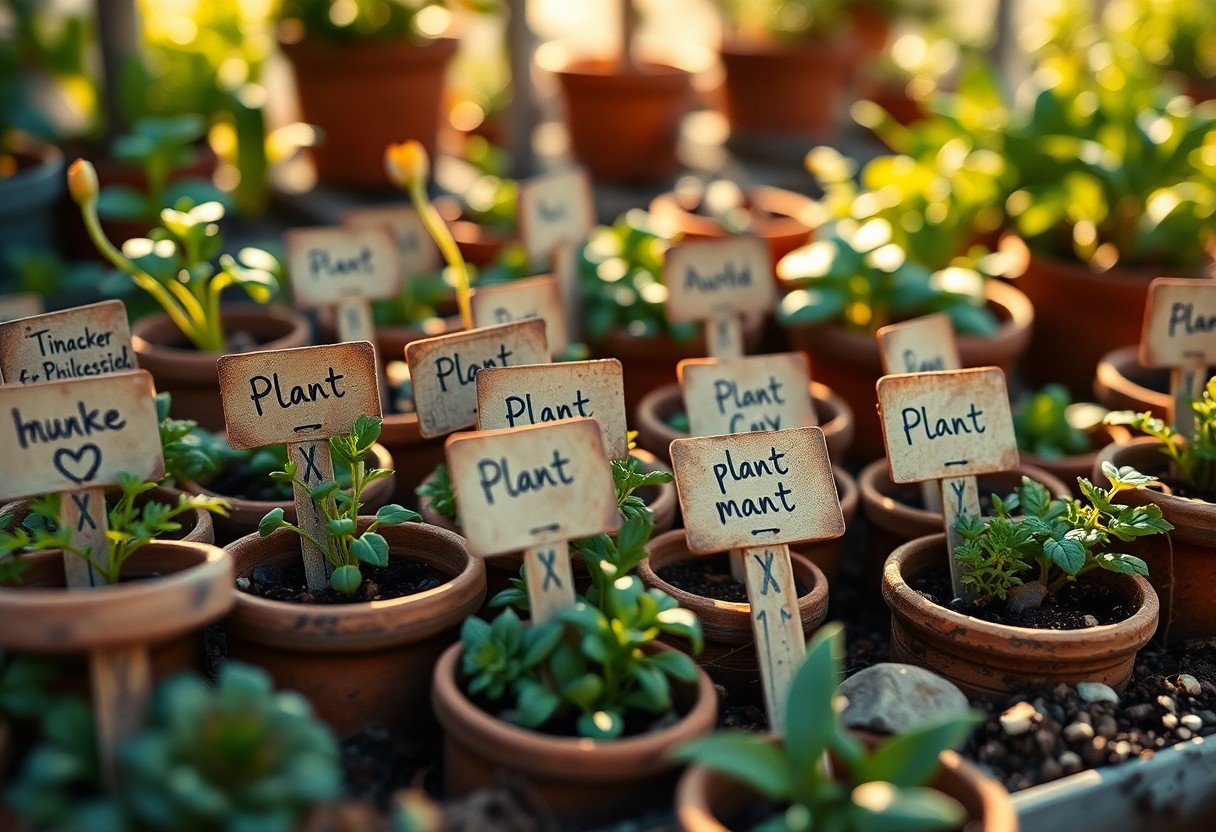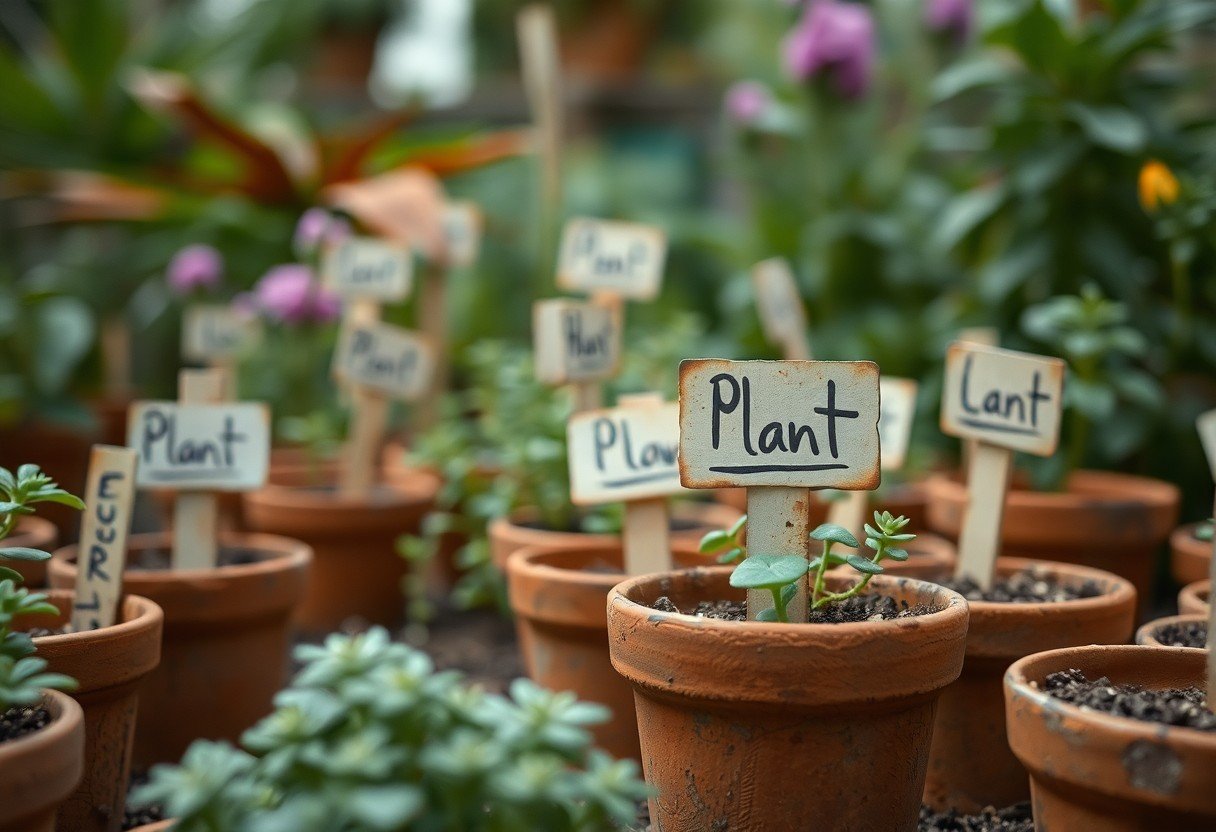You can enhance your garden’s organization and aesthetic with custom clay plant labels. As you browse through gardening ideas, you may have come across beautiful DIY projects like DIY Clay Plant Markers | The Sweetest Occasion. With this guide, you will learn to create your own rustic clay plant labels, allowing you to personalize your garden and keep track of your plants with ease, giving your outdoor space a unique and charming touch.
Planning and Preparation
To begin creating rustic clay plant labels, you need to think about the overall aesthetic and functionality you want to achieve in your garden. Consider the style and theme of your garden, as well as the types of plants you have, to determine the best approach for your labels.
Understanding the Importance of Garden Organization
Now that you’re planning your garden organization, you’ll want to consider how labels can help you keep track of your plants and maintain a beautiful, thriving garden. You’ll be able to quickly identify each plant, making it easier to care for them and enjoy the fruits of your labor.
Choosing the Right Clay for Your Plant Labels
To select the perfect clay for your plant labels, you should consider the durability and texture you need. You’ll want a clay that is easy to work with and will hold up well in outdoor conditions, such as air-dry or polymer clay.
Organization of your garden is key to its success, and choosing the right clay for your plant labels is an important part of that. As you consider your options, think about the look and feel you want to achieve, as well as the level of maintenance you’re willing to commit to. You’ll want to select a clay that is suitable for outdoor use and can withstand the elements, ensuring your labels remain intact and easy to read over time.
Gathering Materials and Tools
Now that you’re ready to start creating your rustic clay plant labels, it’s time to gather the necessary materials and tools. You’ll need air-dry clay, a rolling pin, and a shape cutter to get started.
Essential Items for Creating Rustic Clay Plant Labels
Even the most basic materials can help you create beautiful plant labels. You’ll need air-dry clay, a Rolling pin, and a shape cutter to shape your labels.
Optional Materials for Added Decoration
For added decoration, consider using natural materials like leaves or twigs to create patterns on your labels. You can also use a toothpick or small tool to add details.
A variety of materials can be used to add decoration to your plant labels, allowing you to personalize them to fit your garden’s style. As you explore different materials, you’ll find that you can create unique and intricate designs, making your plant labels a reflection of your personality and gardening style, and helping you to keep your garden organized and beautiful.
Designing Your Plant Labels
Even before you start creating your rustic clay plant labels, consider checking out resources like Keeping organized with DIY garden markers for inspiration.
Tips for Creating Visually Appealing Designs
Designing your labels involves choosing a style that fits your garden’s aesthetic, you can:
- select a font that is easy to read
- pick colors that complement your garden
Any well-designed label will make your garden more organized and beautiful.
Factors to Consider for Effective Labeling
Designs for your plant labels should take into account the environment they will be in, you should:
- consider the size of the label
- think about the material’s durability
The right design will ensure your labels last and are useful.
Appealing plant labels can make a big difference in keeping your garden organized, you can:
- add the plant’s name
- include growing instructions
The key to effective labeling is to make sure the information is clear and easy to access.
Creating the Clay Plant Labels
All you need to create rustic clay plant labels is air-dry clay, a rolling pin, and a toothpick. You can find inspiration for DIY Plant Labels at DIY Garden Markers Tutorial to get started.
Step-by-Step Guide to Shaping and Molding
Labels require some effort to shape and mold. The process can be broken down into:
| Step | Action |
|---|---|
| 1 | Roll out the clay |
| 2 | Cut out the labels |
Techniques for Adding Text and Decorations
Clearly, you want your labels to be readable and visually appealing. You can add text and decorations using a toothpick or a small tool.
A variety of techniques can be used to add text and decorations to your clay plant labels. You can use a toothpick to write the plant names or create patterns, or use a small tool to carve out designs. As you become more comfortable with the process, you can experiment with different techniques to create unique and personalized labels for your garden.
Drying and Sealing the Labels
Keep your clay plant labels away from direct sunlight and moisture to prevent deformation. Allow them to air dry completely, which may take several days, depending on the thickness of the clay.
Methods for Drying Clay Plant Labels
Outdoor drying methods can be used, placing your labels on a wire rack or paper towels to speed up the process, helping you to achieve the desired dryness.
Applying a Sealant for Durability
Around this time, you’ll want to consider applying a sealant to protect your labels from the elements, ensuring they withstand various weather conditions and last longer in your garden.
Clay plant labels, once sealed, will be more resistant to water and sunlight, allowing you to enjoy your garden organization system for a longer period. You can use a clear acrylic spray or a natural wax to seal your labels, applying a thin layer and allowing it to dry before handling them, thus ensuring your labels remain intact and easy to read.
Tips and Variations
Once again, you can add a personal touch to your labels with these ideas:
- Use various colors and textures
- Experiment with different shapes
- Font styles
- Materials
- Natural elements
- Personal symbols
Perceiving your garden’s unique style will help you decide on the perfect label design.
How-to Advice for Customizing Your Labels
Your label design options are endless, and you can customize them to fit your garden’s theme and style, allowing you to create a cohesive look.
Exploring Different Factors for Unique Designs
There’s a wide range of factors to consider when creating unique label designs, including:
This will help you create labels that reflect your personal taste and garden style.
To take your label design to the next level, consider the following factors:
This will enable you to create one-of-a-kind labels that add a touch of personality to your garden, making it truly yours.
To wrap up
Considering all points, you now have the knowledge to create your own rustic clay plant labels, enhancing your garden’s organization and aesthetic. You can customize your labels to fit your garden’s unique style, making it easier for you to identify your plants. With these labels, you will be able to keep your garden tidy and beautiful, reflecting your personal touch and attention to detail, allowing you to enjoy your outdoor space even more.



